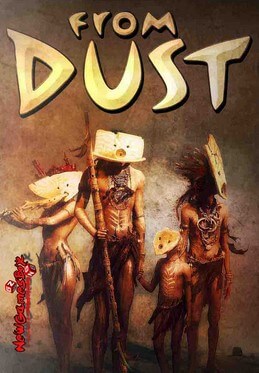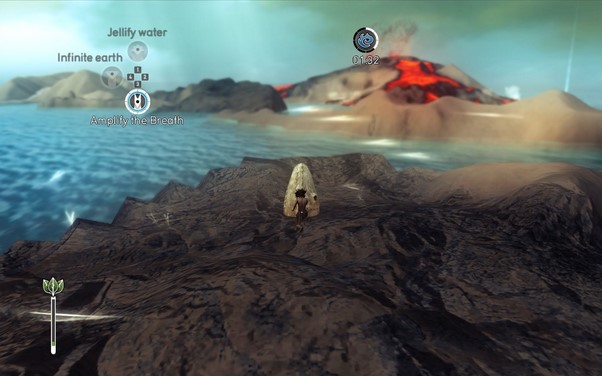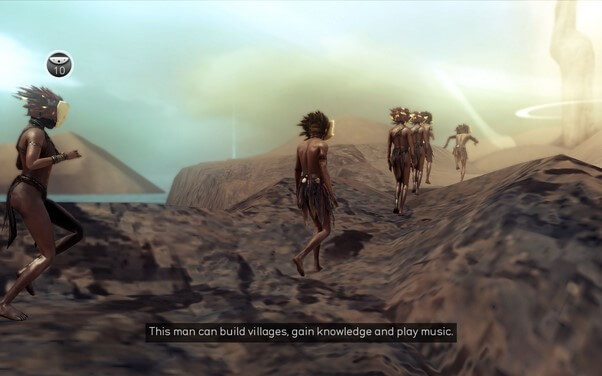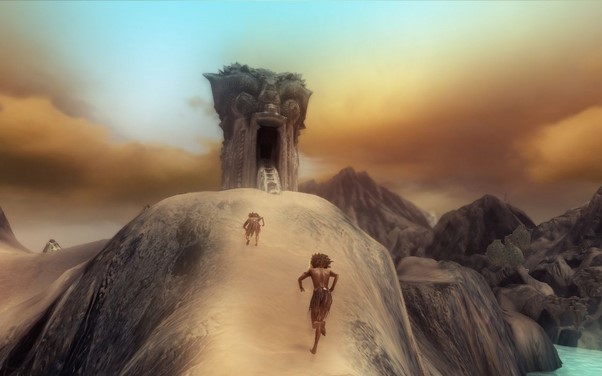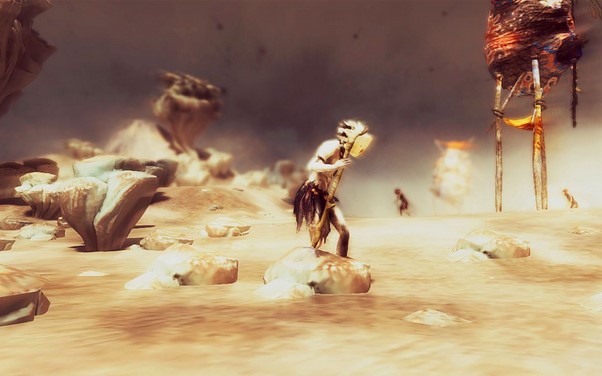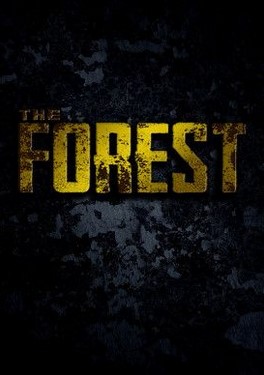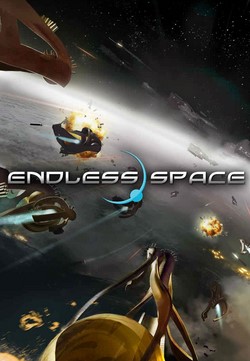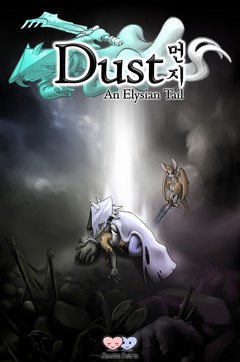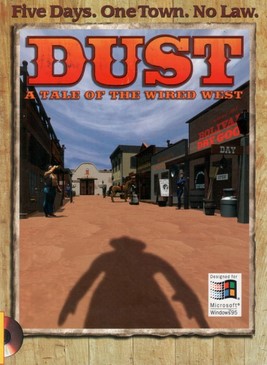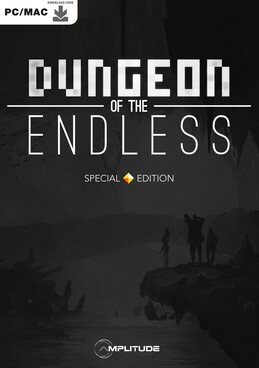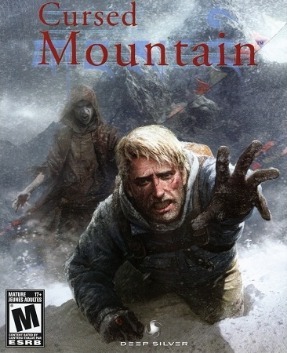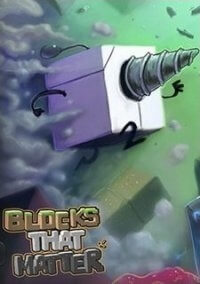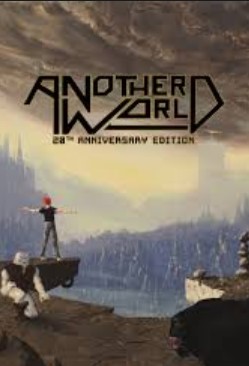From Dust is a god video game, designed by Éric Chahi and developed by Ubisoft Montpellier. The game was released for Microsoft Windows, PlayStation Network, and Xbox Live Arcade in 2011. Described as a spiritual successor to Populous, the game revolves around The Breath, which was summoned by a tribe to help them seek and recover their lost knowledge. In the game, players, controlling a cursor, can manipulate matter such as lava, soil, and water. Players can help the tribespeople to overcome challenges including finding different totems and overcoming natural disasters. In addition to the story mode, the game features a Challenge mode which offers a shorter, but harder experience.
Originally starting its life as a strategy game, From Dust marked the return of Éric Chahi to the video game industry following an extended sabbatical after the completion of his last game, Heart of Darkness. The project was created as a result of his fascination with volcanos, and his desire to combine the ambivalence and violent characteristics of their nature in a new video game. The team was further inspired by African and New Guinean tribes, Conway's Game of Life, works of Polish painter Zdzisław Beksiński, and Koyaanisqatsi. Some features, such as the biological life cycle of the tribespeople, were left out of the game because of the huge amount of work they would require. Ubisoft was originally doubtful about the project but was later convinced by Chahi. The game was made by a small team within the Montpellier studio, so was considered an independent game produced by a large publisher. The game was announced at E3 2010 as Project Dust.
The game received a generally positive reception on release, with critics praising the game's physics, simulation, openness and graphics, while criticizing the game's artificial intelligence and camera angles. Opinions on the game's Challenge mode and mission design were polarizing. The PC version of the game fared worse than other platforms for its technical issues and digital rights management. The game was a commercial success for Ubisoft, selling over half a million copies and became Ubisoft's fastest-selling digital game. Despite its success, Chahi confirmed that he will not return to develop a sequel.
Gameplay
In From Dust, players assume a god-like, first-person perspective from which they manipulate an archipelago environment in an effort to save and enlighten a nomadic tribe and help them to seek their lost knowledge. With a spherical cursor, the user controls certain types of matter in real time. Lava cools to form solid rock, vegetation propagates in soil and spreads naturally once a village is built, and moving water quickly erodes the terrain. Physical changes to the world occur extremely rapidly, allowing players to restructure islands within minutes.
Campaigns in From Dust are structured as a sequence of missions, whereby completing certain objectives expedites the tribe's progress and bestows additional powers, such as the capacity to jellify water. Tribal shamans alert the player to natural disasters, notably tsunamis and volcanic eruptions, shortly before they occur. These disasters can be inhibited through creative, physical manipulation of the environment: a tsunami can be jellified, wildfires extinguished, and lava flows diverted. Although there is no 'explicit sandbox' mode, Chahi stated that each mission features a distinct map, which the player can return to and manipulate further.
From Dust has the option of two main game modes, one being the Story mode, the other a Challenge mode. The former consists of a sequence of missions which play through the story of a lost tribe who are using the player (who controls "The Breath") to travel to different levels in an attempt to discover what happened to their old tribe. By helping the tribe to find the different totems scattered on a map, they can begin constructing their village next to the totem. Players can also send tribespeople to look for magical stones, which will grant them the ability to manipulate the world, by repelling water and fire for example. When the tribe successfully builds villages next to every totem, a portal will open and the player can proceed into the next map. These maps become more and more challenging as players progress. New elements, such as trees that erupt in fire, and plants that explode, are introduced in later levels.
Challenge mode employs similar gameplay to that of the Story mode. The difference is that the gameplay for Challenge mode is faster-paced, offers more puzzles, and sacrifices any storyline in this mode. It consists of 30 levels and players must fulfill certain conditions before succeeding. Each level lasts only a few minutes, offering more exciting, yet harder, gameplay. The time needed for players to complete a level is recorded in an online leaderboard which can be viewed by other players.
Story
From Dust's story revolves around a tribe which has lost the knowledge of their ancestors - The Ancients. They find themselves located in unknown territory. To solve this problem, the tribe gathers and summons "The Breath", controlled by the player, hoping that it will help them to communicate with nature. However, after the summoning, the tribe desperately want answers to their questions, and have a strong desire to recover the lost knowledge. The Breath then guides the tribe to different totems allowing them to perform rituals and to construct villages and settlements. A passage will unlock and allow the tribe to discover new lands and places.
After discovering and journeying through islands of different characteristics, the tribe, with the help of The Breath, have overcome numerous natural disasters including tsunami and volcanic eruption. The tribe follows the path of The Ancients, yet their lands are nowhere to be found. By the last island, the players are given the chance to place the totem around the island and create and form their own island. After placing the final totem, the tribe reaches the place for the final ritual. After the ritual is completed, the entire island collapses and reshapes and sinks into the sea, leaving only the passageway above sea level. After the tribespeople pass the gateway, they realize that they have returned to the first island where they began their journey. The story ends with the narrator saying "And here we are, as on the first day."
